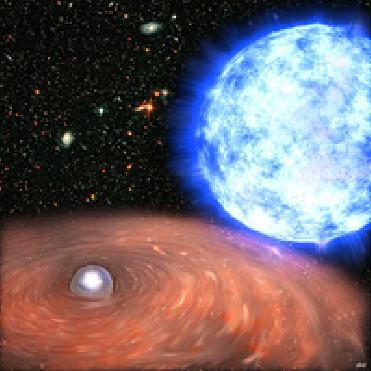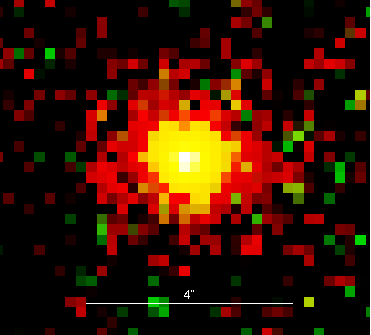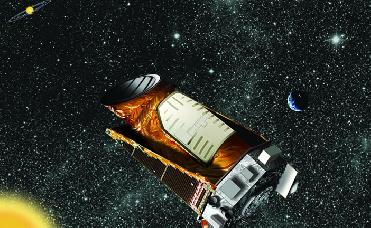
Illustration of the white dwarf and its companion star HD49798. Image credit: ESA
PARIS (BNS): European Space Agency's XMM-Newton orbiting X-ray telescope has detected a celestial Rosetta stone � the first close-up of a white dwarf star that could explode into a particular kind of supernova in a few million years.
Astronomers have been on the trail of this mysterious object since 1997 when they discovered that something was giving off X-rays near the bright star HD 49798. Now, the object has been tracked along its orbit through the telescope. The observation has shown it to be a white dwarf, the dead heart of a star which is circling a companion star, the space agency said.
Sandro Mereghetti, INAF�IASF Milan, Italy, and collaborators have also found that this is no ordinary white dwarf. After measuring its mass, they found it to be more than twice of what it was expected. Most white dwarfs pack 0.6 solar masses into an object the size of Earth. This particular white dwarf contains at least double that mass but has a diameter just half that of Earth. It also rotates once every 13 seconds, the fastest of any known white dwarf.
The mass determination is reliable because the XMM�Newton tracking data allowed astronomers to use the most robust method for �weighing� a star � one that uses the gravitational physics devised by Isaac Newton in the 17th century. Most likely, the white dwarf has grown to its unusual mass by stealing gas from its companion star, a process known as accretion. At 1.3 solar masses, the white dwarf is now close to a dangerous limit.
�The star is likely to explode in a few million years� time... Calculations suggest that it will blaze initially with the intensity of the full moon and be so bright that it will be seen in the daytime sky with the naked eye,� the scientists said.
When it grows larger than 1.4 solar masses, a white dwarf is thought to either explode, or collapse to form an even more compact object called a neutron star. The explosion of a white dwarf is the leading explanation for type Ia supernovae � bright events used as standard beacons by astronomers to measure the expansion of Universe. Until now, astronomers have not been able to find an accreting white dwarf in a binary system where the mass could be determined so accurately.
�This is the Rosetta stone of white dwarfs in binary systems. Our precise determination of the masses of the two stars is crucial. We can now study it further and try to reconstruct its past, so that we can calculate its future,� says Mereghetti.
That future is a spectacular one. The star is likely to explode in a few million years� time. Although it is far enough to pose no danger to Earth, it is close enough to become an extraordinarily spectacular celestial sight. Calculations suggest that it will blaze initially with the intensity of the full moon and be so bright that it will be seen in the daytime sky with naked eye.
 Previous Article
Previous Article Next Article
Next Article













The Indian Air Force, in its flight trials evaluation report submitted before the Defence Ministry l..
view articleAn insight into the Medium Multi-Role Combat Aircraft competition...
view articleSky enthusiasts can now spot the International Space Station (ISS) commanded by Indian-American astr..
view article